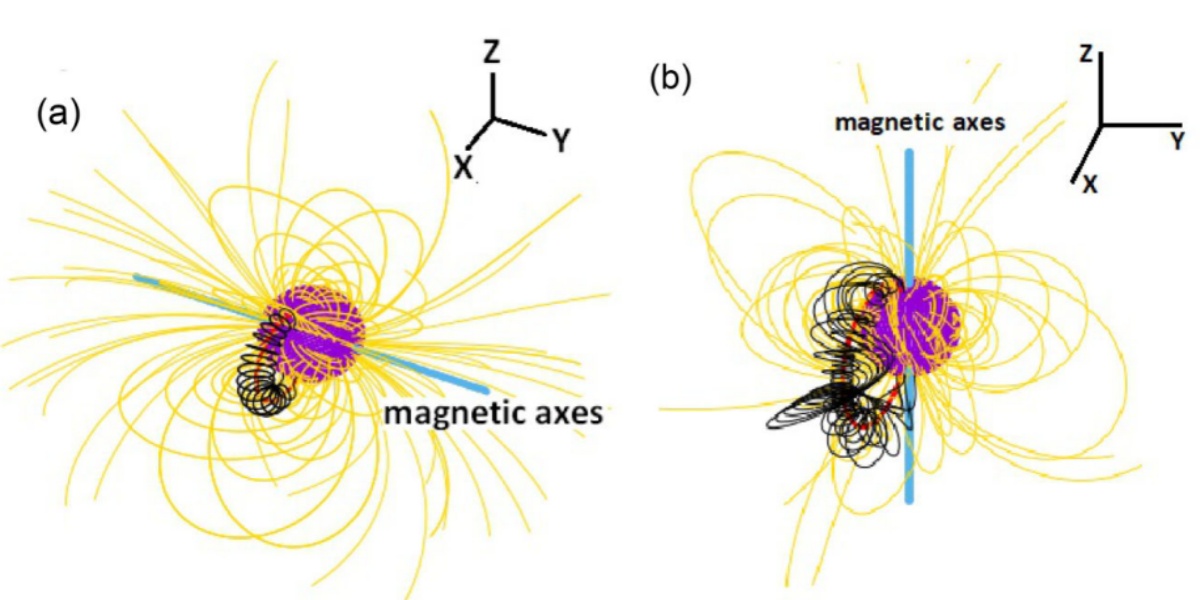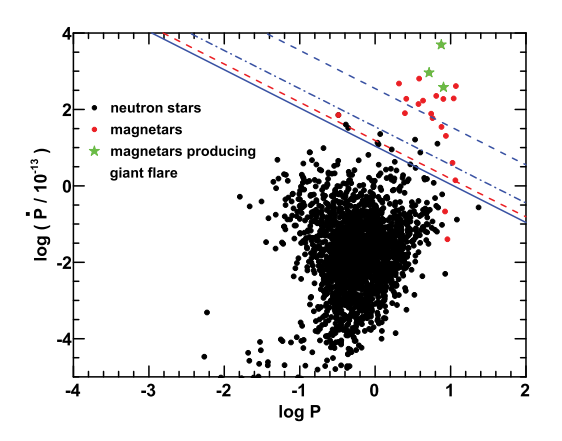
A study conducted by researchers from the Yunnan Observatories of the Chinese Academy of Sciences has unveiled the mechanisms behind giant flares from magnetars. Published in Monthly Notices of the Royal Astronomical Society (MNRAS), this research proposes a theoretical model to explain these rare yet violent cosmic eruptions, enhancing our understanding of magnetar-powered bursts.
Magnetars, a subclass of neutron stars, include anomalous X-ray pulsars (AXPs) and soft gamma repeaters (SGRs). They possess ultra-strong magnetic fields ranging from 1014 to 1015 Gauss, making them some of the most extreme objects in the universe. To date, approximately 30 magnetars have been detected. SGRs occasionally produce giant flares, which are colossal energy releases ranging from 1044 to 1047 erg, ranking them among the most energetic events known. However, the exact mechanisms that trigger these flares remain poorly understood.
To fill this knowledge gap, the research team developed a three-dimensional flux rope catastrophe model, inspired by theories of solar coronal mass ejections (CMEs). This model simulates how magnetic energy accumulates and is released in magnetars, while identifying the conditions required for giant flares to occur.
The study calculated the magnetic field distribution generated by a circular flux rope intersecting a neutron star's surface. It also examined the equilibrium of forces—including Lorentz force, magnetic tension, and gravity—acting on the system. By analyzing stability under changes in the star's dipole magnetic field, the team derived a simple criterion for eruptions: the parameterη= GMm/(R4B2)<0.48 (where G is the gravitational constant, M and R are the star's mass and radius, m is the ejecta mass, and B is the dipole field strength) serves as a necessary condition for the system to become unstable and lead to a flare.
This criterion establishes the minimum magnetic field strength required for giant flares. By combining it with known relationships between magnetar magnetic fields and spin periods, the researchers mapped out theoretical flare-prone regions on a period versus period-derivative diagram, which aligns well with observed data. The model also successfully estimated a solar ejecta mass limit of 1017 grams, consistent with solar observations.
This work provides a unified framework for explaining magnetar flares and solar eruptions, emphasizing the role of magnetic instability. Future applications of this model could extend to other astrophysical phenomena that involve the release of magnetic energy.
The study was supported by the National Key R&D Program of China, and the National Natural Science Foundation of China, among other sources.

When a magnetic flux rope is present, the distribution of the magnetic field near the star's surface. The purple sphere represents the star, the blue line represents the magnetic axis, the red line represents the magnetic flux rope, the yellow lines represent the magnetic field lines, and the black lines represent the magnetic field lines near the rope. The left and right figures show the two cases where the magnetic flux rope is perpendicular and parallel to the magnetic axis, respectively. (Image by MENG Ying)

The distribution of neutron star periods and period derivatives. Black dots represent ordinary neutron stars, red dots represent magnetars, and green stars denote magnetars that have been observed to produce flares. The three blue lines show theoretical criteria for different ejected masses (solid, dash-dotted, and dashed lines correspond to 1024.5 g, 1025 g, and 1026 g, respectively). Flares can only occur when a neutron star's parameters lie above these lines. (Image by MENG Ying)

86-10-68597521 (day)
86-10-68597289 (night)

52 Sanlihe Rd., Xicheng District,
Beijing, China (100864)

